Of all the traditional Christmas carols, "The Holly and the Ivy" is perhaps one of the most obscure. While the song dates back to 17th-century England, holly and ivy have been significant since pagan times, when the two plants had spiritual meanings.
Rather than ban their use, the early Christian church adopted them for Christmas decorations by changing the symbolism to suit the Nativity story. The tradition of using these two evergreens has continued up to present times, probably because both evergreens have always been very common and easy to obtain from woods and hedgerows.
The holly refered to in the lyrics is Common or English holly
(Ilex aquifolium), and the ivy is English ivy
(Hedera helix). Though still widely grown, both can cause problems in gardens. Besides the common species, a wide range of cultivars and species of both holly and ivy make good year-round shrubs and trees, while still providing festive foliage and berries.
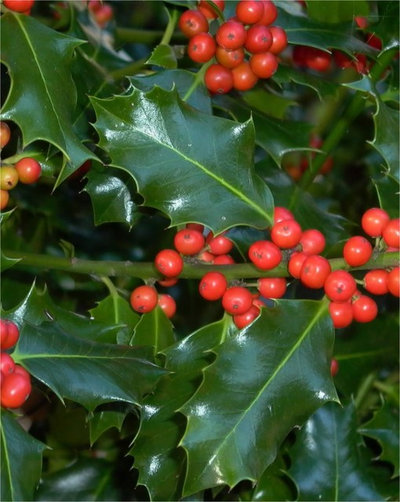 English Holly Ilex aquifolium
English Holly Ilex aquifoliumAlong with the Christmas tree, holly really conjures images of a classic Christmas. The tradition of using this evergreen is as strong today as ever. We use holly in our Christmas wreaths and swags, cutting well-berried sprigs for the best effect.
Though garden centers and stores sell decorated hollies wrapped and ready, as well as plastic imitations, why not consider growing your own?
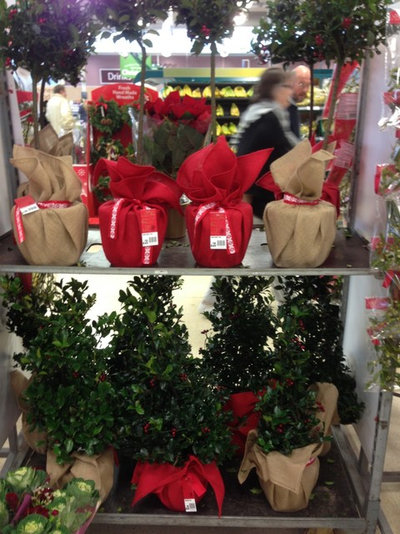
This is what we we think of when we "deck the halls with boughs of holly." It is native to Europe and widespread across the continent. It grows, reasonably slowly, to a 40-foot-tree, though it responds well to pruning and makes a very good topiary subject.
The colors of Christmas, red and green, could have originated from holly. Through winter, glowing red berries are held in clusters against shiny, spiny, dark green leaves.
Beware, though, plants are either male or female, and though they both carry flowers, only female plants produce the berries we cherish. Though the native
Ilex aquifolium is the favorite at Christmas, there are other varieties that perhaps give more to a garden over the year. English holly grows best in moist, well-drained soil.
USDA zones: 5 to 9 (find your zone);
RHS hardiness rating (U.K.):
H4
Water requirement: Regular
Light requirement: Full sun to partial shade
Mature size: 40 feet tall
Seasonal interest: Evergreen; red berries in winter
When to plant: Spring or fall
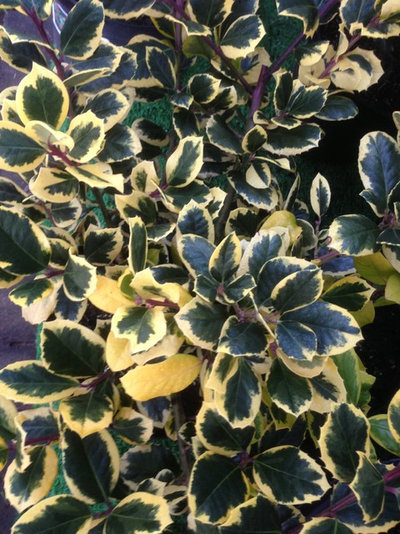 Ilex x altaclarensis 'Golden King'
Ilex x altaclarensis 'Golden King'
Through a quirk in naming, the 'King' is in fact a female. If you're after holly berries, 'Golden King' can be sparse in fruiting and may not be the best choice. But it makes up for its lack of fruit with its superb dark green leaves edged with bright yellow. Berries start a reddish brown color, then ripen to red.
It can be grown as a large shrub but easily makes a small bushy tree.
USDA zones: 7 to 9;
RHS hardiness rating: H4
Water requirement: Regular
Light requirement: Full sun to partial shade
Mature size: 20 feet tall
Seasonal interest: Evergreen
When to plant: Spring or fall
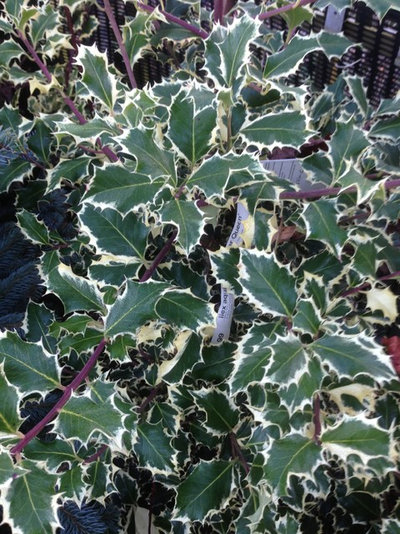 Ilex aquifolium 'Argentea Marginata'
Ilex aquifolium 'Argentea Marginata''Argentea Marginata' makes a beautiful conical tree. Its cream-edged leaves are typically spiny and are flushed pink when young. It has rather dull white flowers followed by abundant bright red berries — perfect for Christmas decorating.
There is also an interesting weeping cultivar,
Ilex aquifolium 'Argentea Marginata Pendula'.
USDA zones: 5 to 9;
RHS hardiness rating: H4
Water requirement: Regular
Light requirement: Full sun to partial shade
Mature size: 50 feet tall
Seasonal interest: Evergreen; red berries in winter
When to plant: Spring or fall
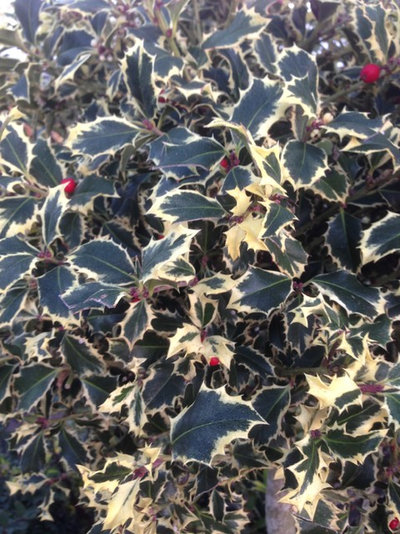 Ilex aquifolium 'Silver Queen'
Ilex aquifolium 'Silver Queen''Silver Queen' grows into a small, dense evergreen tree with dark green spiny leaves with broad cream margins. The young leaves have a delightful pink tinge. Its beautiful foliage and bushy habit make it an ideal low-maintenance hedging plant.
USDA zones: 5 to 9;
RHS hardiness rating: H4
Water requirement: Regular
Light requirement: Full sun to partial shade
Mature size: 30 feet tall and 14 feet wide
Seasonal interest: Evergreen; flowers midspring
When to plant: Spring or fall
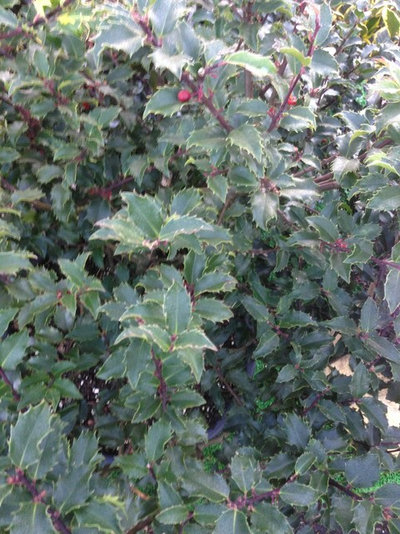 Ilex x meserveae 'Blue Princess'
Ilex x meserveae 'Blue Princess''Blue Princess' is one of the best bushy, spreading hollies. Bright blue-green foliage is held on purple-green stems. These dark leaves provide a great background for its white flowers, sometimes flushed with pink, that appear in spring. Abundant red berries follow.
USDA zones: 4 to 8;
RHS hardiness rating: H4
Water requirement: Regular
Light requirement: Full sun to partial shade
Mature size: 10 feet tall and wide
Seasonal interest: Evergreen; flowers in spring
When to plant: Spring or fall
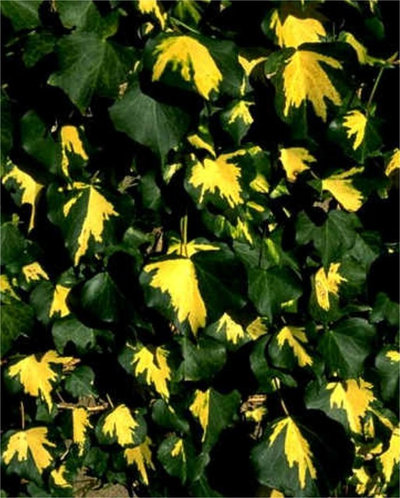 Hedera helix 'Gold Heart'
Hedera helix 'Gold Heart'This is one of the best variegated
Hedera helix cultivars, with its small heart-shaped dark green leaves with pale golden centers — pink stems are a nice added touch.
USDA zones: 5 to 11;
RHS hardiness rating: H4
Water requirement: Moderate to regular
Light requirement: Shade tolerant but will keep its color better in full sun
Mature size: Spreads 25 feet
Seasonal interest: Evergreen
When to plant: Plant semihardwood cuttings in summer.
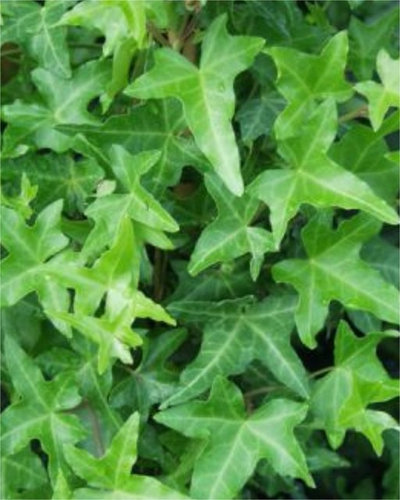 Hedera helix 'Sagittifolia'
Hedera helix 'Sagittifolia' 'Sagittifolia' is a real stunner, with its arrow-shaped dark green leaves that take on a bronze tinge over winter months. As well as being a superb climber, it also makes a great ground cover for shady conditions.
USDA zones: 4 to 9;
RHS hardiness rating: H4
Water requirement: Moderate to regular
Light requirement: Shade tolerant
Mature size: Spreads 12 feet
Seasonal interest: Evergreen
When to plant: Plant semihardwood cuttings in summer.
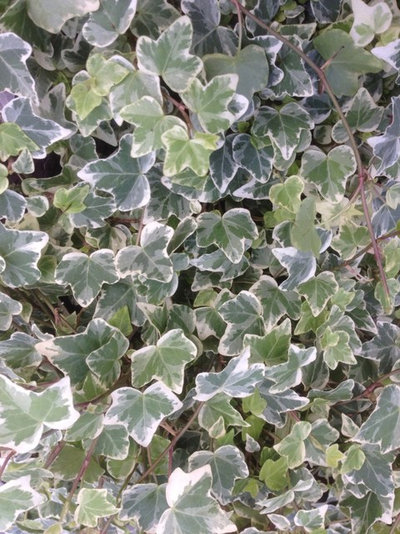 Hedera helix 'White Wonder'
Hedera helix 'White Wonder'
With its heart-shaped leaves edged in creamy white, 'White Wonder' is perfect for brightening any shady corner. It's a medium-height ivy that can become invasive, though can be easily controlled with pruning.
Its beautiful young leaves make it a perfect plant for baskets and window boxes.
USDA zones: 4 to 9;
RHS hardiness rating: H4
Water requirement: Moderate to regular
Light requirement: Shade tolerant but needs sun to keep variegation
Mature size: Spreads 12 feeet
Seasonal interest: Evergreen
When to plant: Plant semihardwood cuttings in summer.





